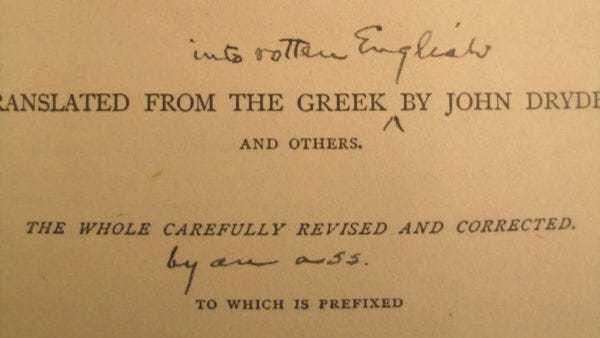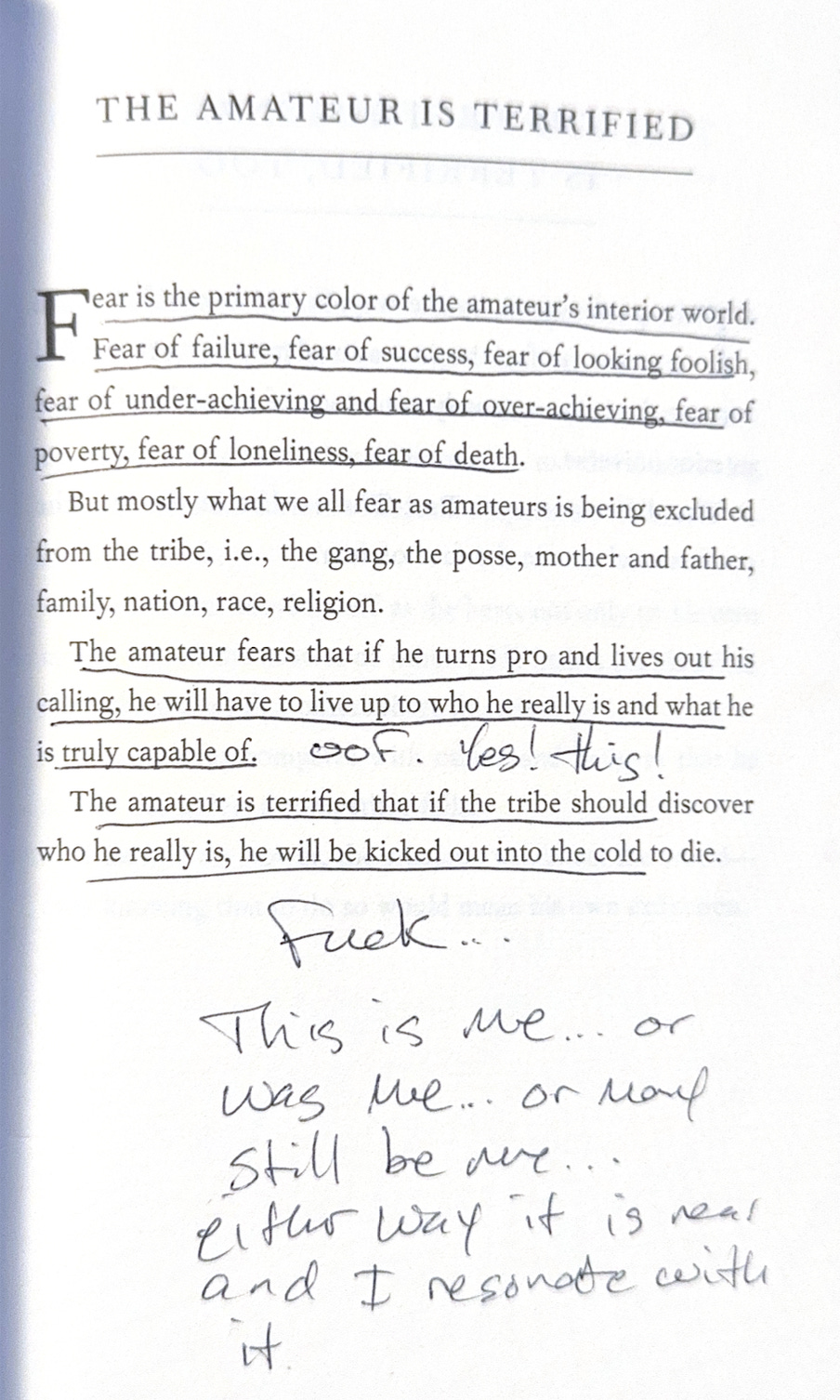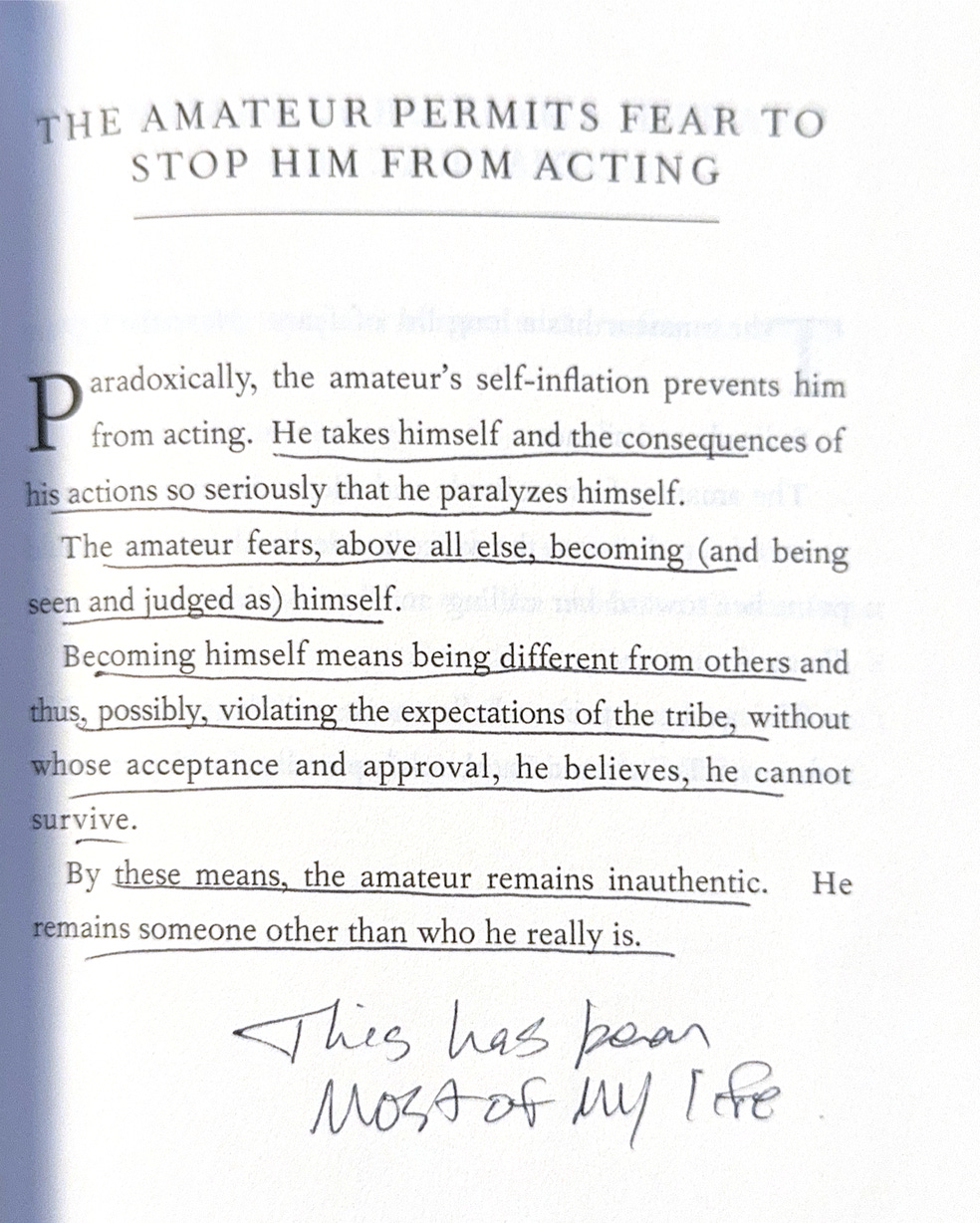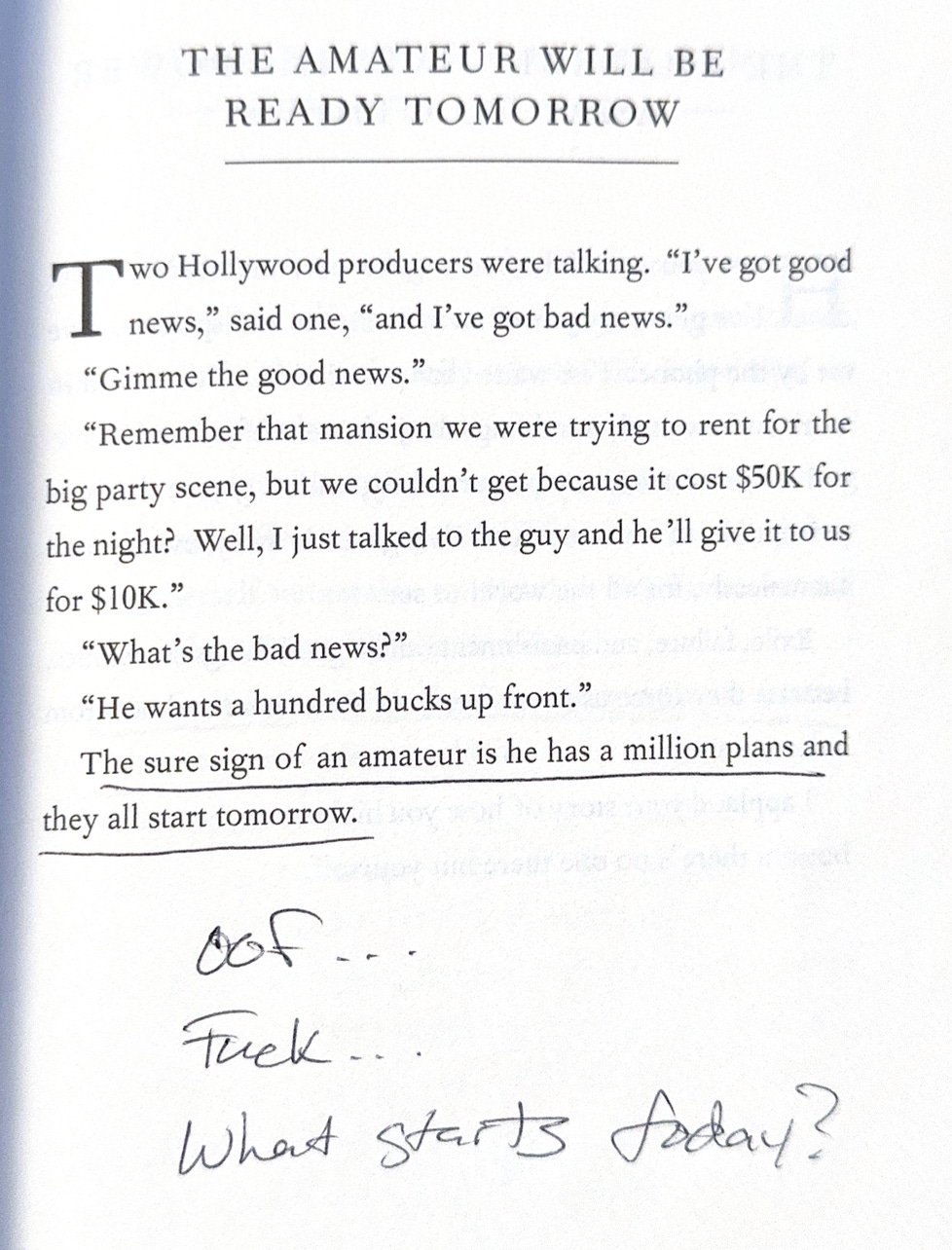The best way to read books
I’m convinced that the best way to read books is by writing on them.
A couple of months ago, I found a gem at my favorite bookstore — a copy of Turning Pro by Steven Pressfield, bestselling author of one of my favorite books on creativity, The War of Art.
Turning Pro, priced at a measly $3.00, was collecting dust in the back of the store atop a discount pile. Naturally, I picked it up. Not because I’m obsessed with Pressfield or because I’m cheap, but because I’m obsessed with marginalia.
“In getting my books,” Edgar Allan Poe wrote in 1844, “I have always been solicitous of an ample margin; this is not so much through any love of the thing in itself, however agreeable, as for the facility it affords me of penciling in suggested thoughts, agreements, and differences of opinion, or brief critical comments in general.”
Marginalia—the act of underlining, asterisking, arguing, questioning, and even criticizing in the surrounding margins — has always been central to the serious reader. George Steiner defined an intellectual as “quite simply, a human being who has a pencil in his or her hand when reading a book.”

The marginalia in my $3.00 copy of “Turning Pro” isn’t just any marginalia. The margins display reactions, questions, and reflections that belong to someone I know well — a creative person, doing everything society tells them to except the thing they came to this planet to do — an amateur.
You probably know an amateur. Or maybe you are one.
Pressfield defines “amateur” as someone who dabbles in their creative work without fully committing to it. An amateur is someone who dreams but doesn’t take consistent action to realize those dreams.



I guarantee you that the person I inherited this copy from is well on their way to pro. Their marginalia is so raw and honest that I almost feel guilty reading it, much less sharing it. But it’s this level of honesty, engagement, and focus that is required to be great.
Good creative minds read. Great creative minds read with a pencil.
Writing in the margins offers a way to be in conversation. Often, we are in conversation with the text itself, with ideas that evoke something in us—recognition, anger, compassion, etc.
We also communicate with our future selves by recording ideas and writing down reminders for later use. Then, there’s the conversation we have with an author who might have lived hundreds of years ago. And maybe, if we’re lucky, we travel into the future to have a conversation that could potentially change someone’s life.
Marginalia helps us read, think, and write better. It also takes passive reading and turns it into an active two-way conversation (sometimes three or more). Finally, marginalia gives us permission to focus on what’s important, ignore the irrelevant, and make a mess—all required skills for turning pro.